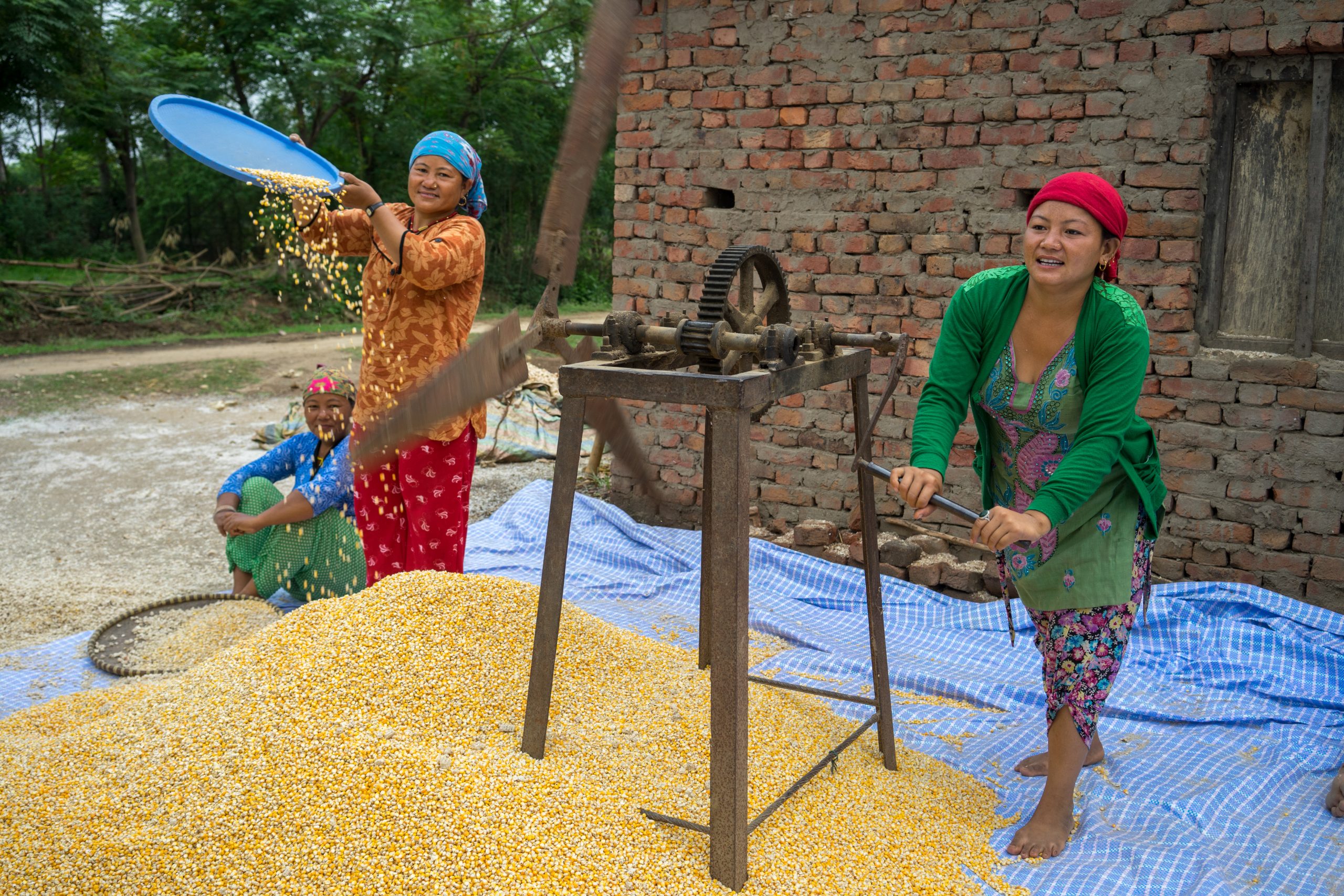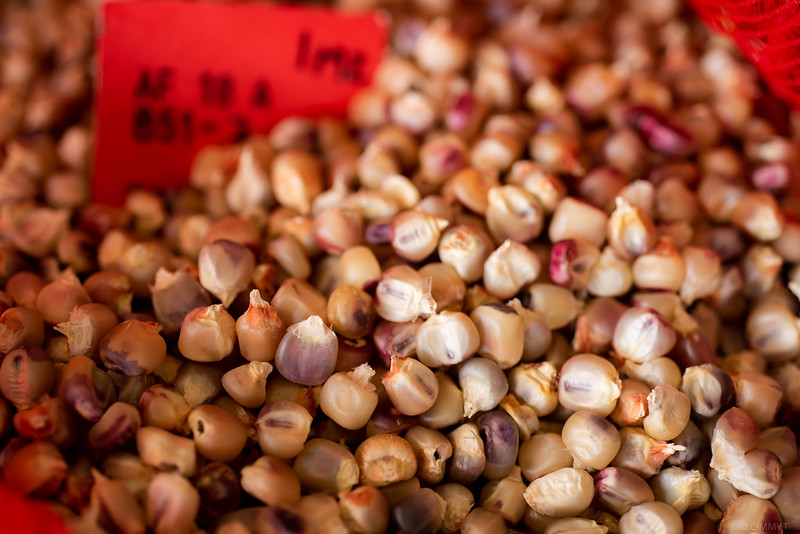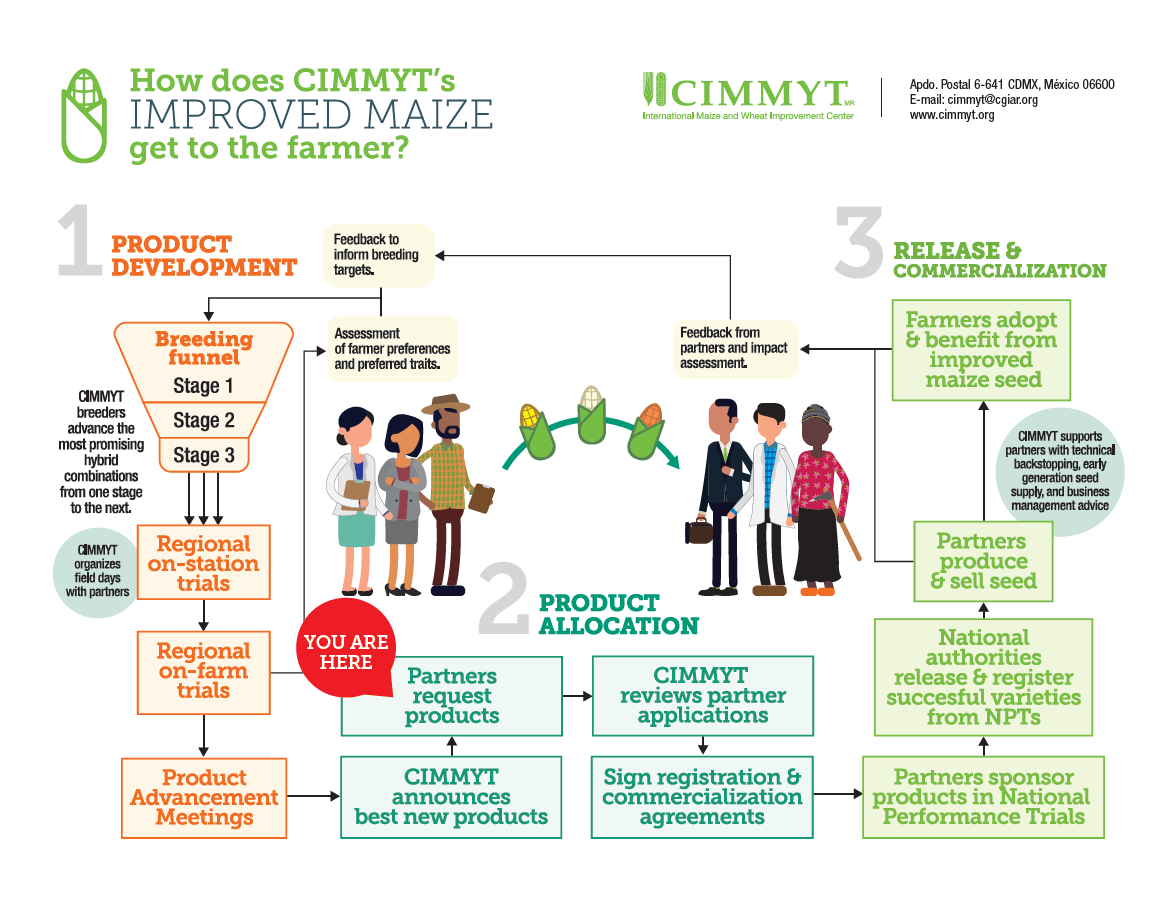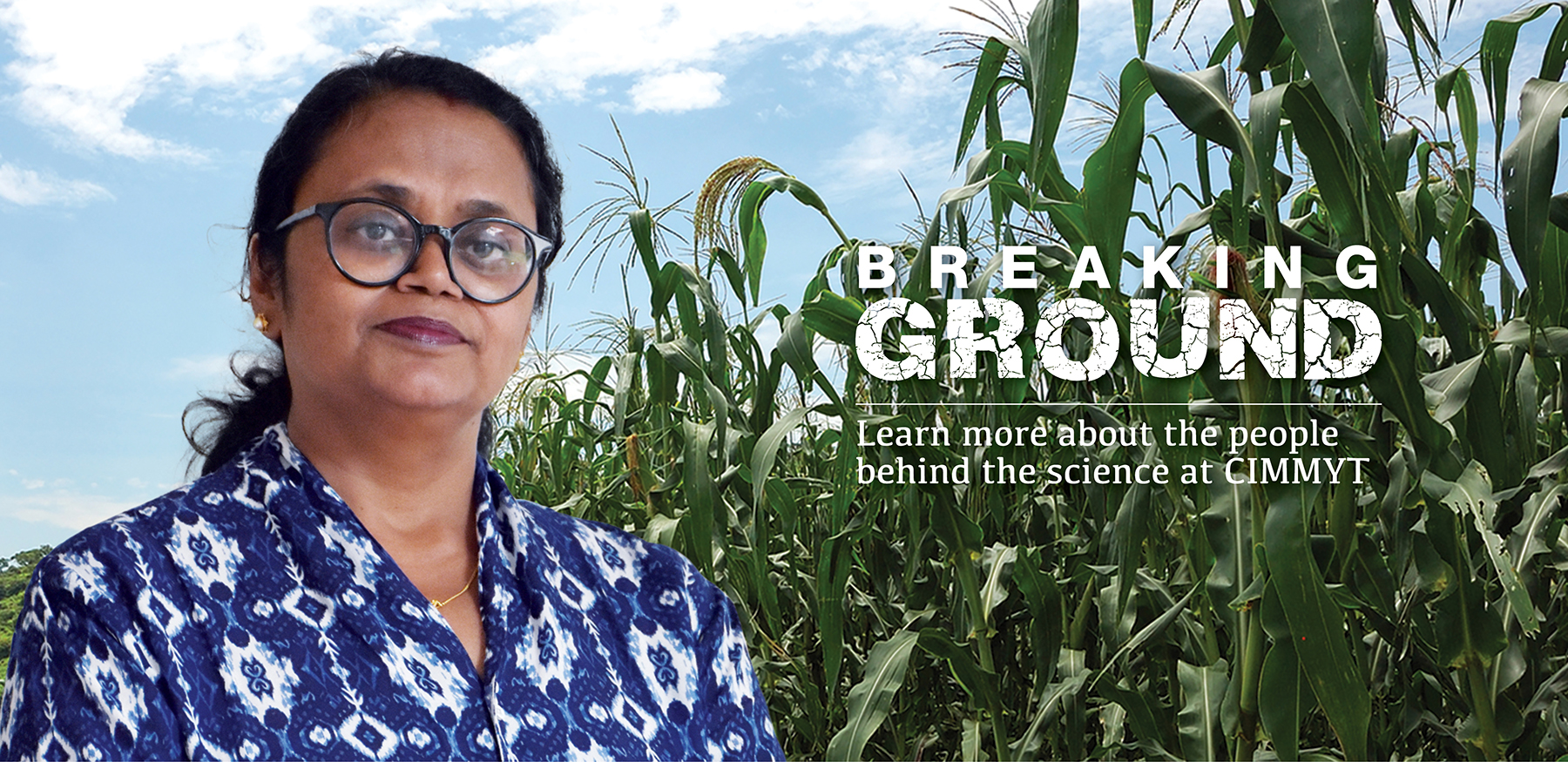New improved maize varieties may fall short in meeting the needs of women and the poorest of farmers – a concern that remains a focus of the International Maize and Wheat Improvement Center (CIMMYT) and the wider CGIAR.
Lower than expected adoption rates for some new maize varieties suggest that innovative strategies in breeding and seed delivery are likely needed. There is broad recognition of the need to get new germplasm from the CGIAR and its partners into the fields of more farmers in less time.
CIMMYT research on markets and social inclusion focuses on understanding two related dynamics: the unique preferences, needs and circumstances faced by women and the poorest farmers, and the implications these carry for how breeding programs and seed companies design and market new varieties.
Taking stock of knowledge and gaps in gender and maize breeding
A new paper by CIMMYT researchers, “Gender inclusivity through maize breeding in Africa: A review of the issues and options for future engagement”, takes stock of lessons learnt on gender and maize breeding and assesses knowledge gaps that need to be filled to effectively support gender-responsive and gender-intentional breeding and seed systems work.
Decades of research on maize preferences have sought to understand if and how men’s and women’s preferences differ. However, existing data provides unclear guidance to maize breeders on gender-relevant traits to prioritize in product profile design. The evidence suggests a lack of meaningful differences in what men and women are looking for in maize—yield, drought tolerance and early maturity—are high priorities almost across the board.
One reason for the similarity in preferences among women and men may relate to how we evaluate them, the authors argue. Preference studies that focus on evaluation of varieties’ agronomic and productivity-related traits may overlook critical components of farmers’ variety assessment and seed choice, including their household and farming context. Ultimately, they say, we need to explore new approaches to evaluating farmer demand for seed, considering new questions instead of continuing to look for gender-based differences in preferences.
A first step in that direction is to figure out how demand for maize seed differs among farmers according to their needs, priorities and resource limitations. Gender is definitely a part of that equation, but there’s much more to think about, like how maize fits into household food security and livelihoods, decision-making dynamics around maize production, and seed accessibility. New tools will be needed for understanding those and how decision-making around seed happens in real-world contexts.
Understanding how farmers make decisions on seed choice
The authors offer several practical suggestions for maize breeders and other researchers in this space:
- First, explore tools that allow farmers to evaluate varieties in their household context. Large-scale farmer-managed on-farm trials have gained attention in the CGIAR as tools for more accurate assessment of farmer preferences. These approaches have several added advantages. They enable evaluation of variety performance under realistic management conditions—including under management practices used disproportionately by women, such as intercropping, which is typically excluded from larger researcher-managed trials. These approaches also enable farmer evaluation of maize varieties not only in terms of in-field performance and yield at harvest stage, but in terms of grain quality after harvest. This is particularly important for social inclusion, given women’s disproportionate attention to traits related to processing and consumption.
- Second, move beyond gender-based preferences in evaluating seed demand. Gendered preferences matter, but they may not be the sole factor that determines a farmer’s choice of seed. We need to understand market segments for seed in relation to farmers’ aspirations, risk perceptions and tolerance, livelihood priorities, and household context. This also means exploring the intrahousehold gender dynamics of maize farming and seed choice to understand women’s roles in decision-making in maize production, processing, and consumption.
- Finally, consider questions related to maize seed systems more broadly. Are maize seed systems capable of delivering gender-responsive and gender-intentional varieties to women and men? What are the barriers to wider uptake of new varieties aside from variety suitability? Innovative marketing and delivery mechanisms may be critical to realizing gains from more gender-intentional breeding.
With the transition to the One CGIAR, sharing tools and lessons learned across crops will be increasingly important. Researchers in the CGIAR community have developed new tools for gender-responsive and gender-intentional breeding. This includes through the Gender and Breeding Initiative, which has published the G+ tools to support gendered market segmentation and gender-intentional product profile development.
While learning from one another’s experiences will prove essential during the transition, recognizing that the gender dynamics of maize production may be very different from sweet potato production will also be key. Here, the new Market Intelligence & Product Profiles initiative and SeEdQUAL initiative on seed systems will both create new spaces for exploring these issues across crops.
Related links
Webinar: CIMMYT Webinar (Nov. 2021) on Gender Inclusivity through Maize Breeding
CGIAR Gender & Breeding Initiative link: http://www.rtb.cgiar.org/gender-breeding-initiative/
Breeding for better gender equity at CGIAR Excellence in Breeding: https://excellenceinbreeding.org/blog/breeding-better-gender-equity


 Innovations
Innovations 
